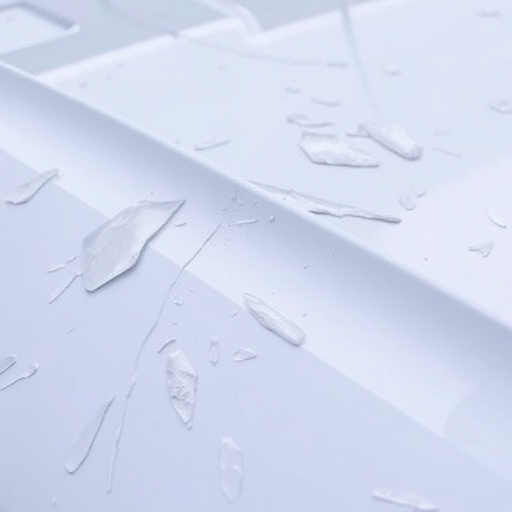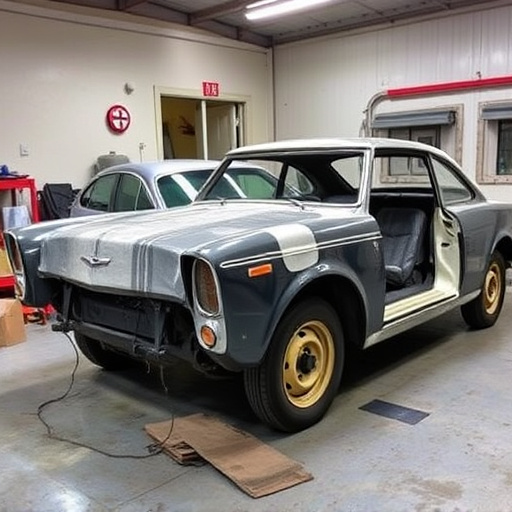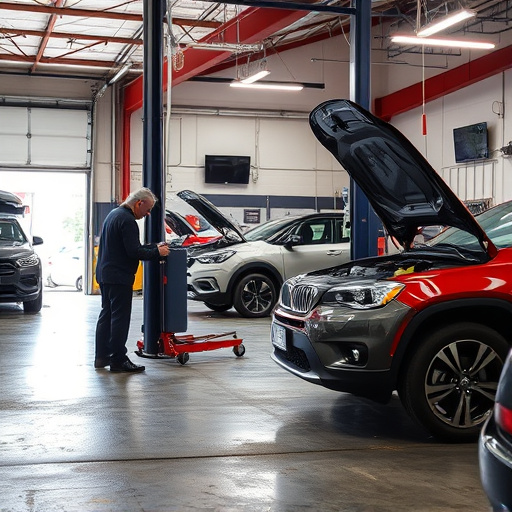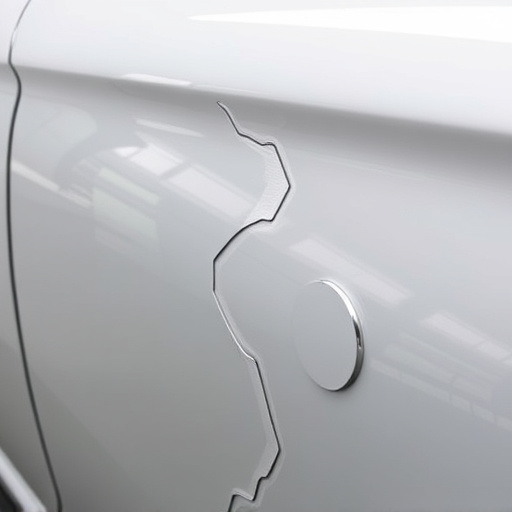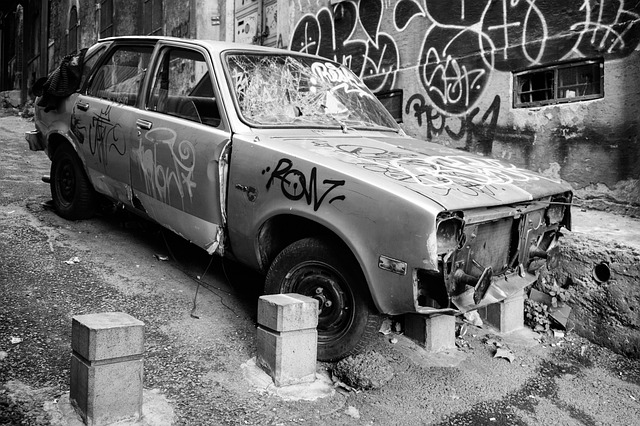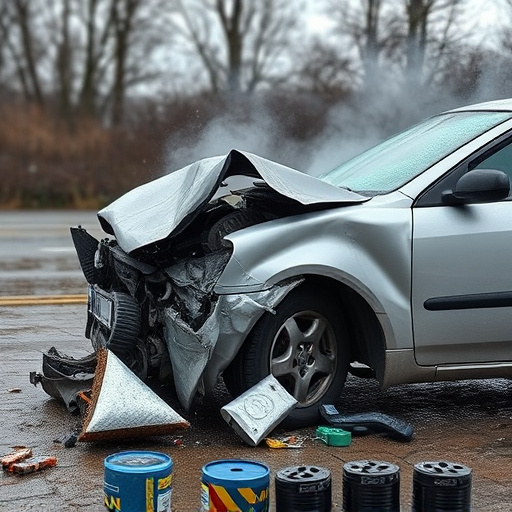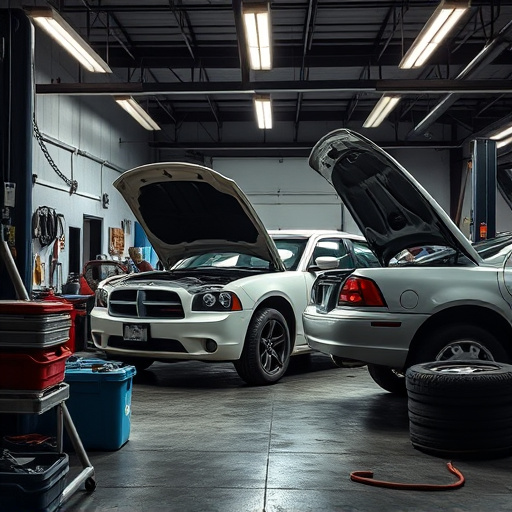An integral part of vehicle safety and performance, the exhaust system requires meticulous attention during collision repair. Even minor accidents can cause structural damage, leading to reduced efficiency and potential safety risks. Prompt and expert repair at specialized centers is crucial for maintaining optimal engine performance, minimizing environmental impact, and enhancing driver safety. Skilled technicians use advanced technologies and precise methods to restore the exhaust system, ensuring better flow, reduced backpressure, improved engine efficiency, and extended lifespan, ultimately saving owners from future maintenance costs.
In today’s world, understanding how collisions impact vehicle exhaust system efficiency is paramount for both safety and performance. The exhaust system plays a crucial role in vehicle dynamics, facilitating gas emission control while enhancing engine performance. When accidents occur, these systems often bear the brunt of the force, leading to potential damage that can affect overall efficiency. This article explores the intricate relationship between collisions and exhaust systems, delving into specific components, and offering strategies for efficient collision repair to optimize exhaust efficiency. Key terms: exhaust system collision repair.
- Understanding the Exhaust System and its Role in Vehicle Performance
- The Impact of Collisions on Exhaust System Components
- Strategies for Efficient Collision Repair to Enhance Exhaust Efficiency
Understanding the Exhaust System and its Role in Vehicle Performance
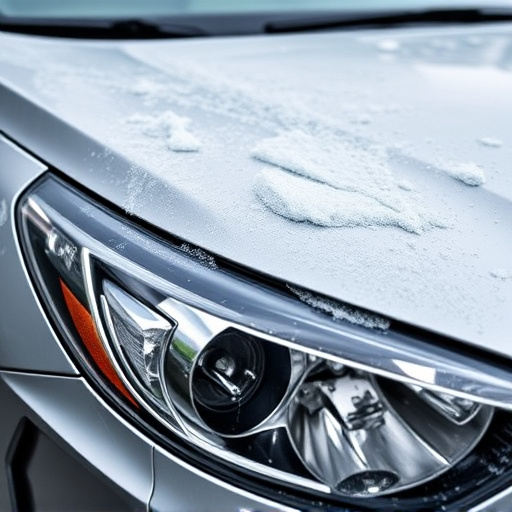
The exhaust system is a vital component of any vehicle’s performance and overall health. It serves as the conduit for expelled gases from the engine, allowing them to exit the car efficiently while reducing noise pollution. A well-maintained exhaust system not only enhances fuel efficiency but also contributes to optimal engine performance. It comprises various parts, including headers, mufflers, catalytic converters, and pipes, all working in harmony to facilitate smooth gas flow.
When a collision occurs, it can significantly impact the exhaust system’s integrity and functionality. Collision repair goes beyond mere aesthetic fixes like vehicle paint repair or car dent repair; it demands careful assessment and potential replacement of damaged exhaust components to ensure optimal performance and safety. Proper collision repair, including car body repair, should address any structural issues that could compromise the exhaust system’s effectiveness, thereby maintaining the vehicle’s overall efficiency.
The Impact of Collisions on Exhaust System Components

In the event of a collision, even minor ones, the exhaust system becomes a critical area that requires careful attention during vehicle inspection and repair. The impact of accidents can cause significant damage to various components within the exhaust system, leading to reduced efficiency and potential safety hazards. Exhaust pipes, mufflers, and catalytic converters are particularly vulnerable due to their exposure to high temperatures and force during a crash.
Collisions can result in deformations, cracks, or complete failures of these parts, necessitating prompt replacement or expert repair at a reliable auto collision center. Proper exhaust system collision repair is essential not only for maintaining optimal vehicle performance but also for ensuring that toxic gases are effectively dispersed, preventing environmental contamination and enhancing driver safety. Skilled car bodywork services at reputable collision repair shops can restore the exhaust system to its original condition, allowing drivers to return to the road with peace of mind.
Strategies for Efficient Collision Repair to Enhance Exhaust Efficiency

Efficient collision repair plays a crucial role in maintaining and enhancing the exhaust system’s performance after an accident. Skilled technicians employ various strategies to ensure that the exhaust system is restored to its optimal state. This includes meticulous welding and replacement of damaged components, ensuring proper alignment and seal integrity. A thorough inspection is conducted to identify any secondary issues that could impact exhaust efficiency, such as cracks or leaks in the system’s piping.
Furthermore, modern car body shops offer advanced technologies like computer-aided design (CAD) and 3D scanning to accurately measure and replace parts. These innovative car paint services not only ensure precise fitting but also preserve the vehicle’s overall aesthetics. Proper collision repair practices not only guarantee better exhaust flow, reducing backpressure and improving engine performance, but also contribute to extending the lifespan of the exhaust system, ultimately saving owners money in long-term maintenance costs.
Collisions can significantly impact a vehicle’s exhaust system efficiency, which is crucial for optimal performance and emissions control. By understanding how various components behave during a crash, vehicle technicians can employ effective collision repair strategies. These methods ensure that the exhaust system not only functions correctly but also maintains its efficiency after a collision. Efficient collision repair practices are essential in minimizing downtime, preserving vehicle value, and promoting safer driving conditions for exhaust system performance.
